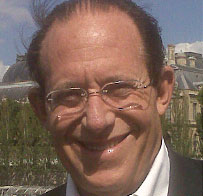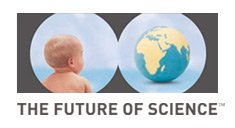William Haseltine

William A. Haseltine PhD has an active career in both Science and Business. He was a professor at Harvard Medical School and Harvard School of Public Health from 1976-1993 where he was Founder and the Chair of two academic research departments. He is well known for his pioneering work on cancer, HIV/AIDS and genomics. He has authored more than 200 manuscripts in peer reviewed journals and is the author of several books. He is the Founder of Human Genome Sciences, Inc and served as the Chairman and CEO of the Company until 2004. He is also the Founder of eight other successful biotechnology companies. He is a Partner in Ashmore India Asset Management Ltd, a private equity asset management company, a member of the Reliance Industries, Ltd Innovation Council, India and an advisor to several biotechnology and pharmaceutical companies. William A. Haseltine is currently the President is of the Haseltine Foundation for Medical Sciences and the Arts, a foundation that supports access to high quality health for the poor and middle class of developing countries, primarily India, the foundation also fosters a dialog between sciences and the arts. He is the Chairman of Haseltine Global Health, LLC, a company dedicated to creating new and more efficient means to develop new life saving drugs and medical devices. He is an Adjunct Professor at The Scripps Institute for Medical Research and the Institute of Chemical Engineering the University of Mumbai, India, and is a Trustee of The Nimagadda Foundation, India He is also active in the field of renewable energy. He is Chairman of the Board of the Berkeley Center for Synthetic Biology and a Director of The Solena Group, Inc. Dr. Haseltine is active in public service. He is Co-Chair of the President's Council of the Cold Spring Harbor Laboratory, and is a Governor of the New York Academy of Science. He is an honorary member of the Board of Trustees of the Brookings Institution, a member of the Council on Foreign Relations , and a Patron of the Asia Society. He resides in Washington DC and New York City.
The Future of DNA Technology: Transforming the Material world.
Biotechnology is the selection or alteration of living organisms for human use. Its oldest forms are agriculture and animal husbandry: modifying the natural world to feed and clothe ourselves. Our ancestors also quickly figured out how to harness yeast to ferment alcohol and leaven bread. More recently, the discovery of penicillin, in 1928, ushered in a new era: the large-scale cultivation of microorganisms to produce antibiotics. But the modern biotechnology revolution really began when scientists learned how to transfer genes from one organism to another—such as adding the gene for growth hormone to bacteria. Suddenly, it became possible to produce large quantities of pure human hormones, enzymes, antibodies, and other proteins. Many are now used as medicines.
What will the future hold for this ancient technology made new? I believe that in this field, the past is prologue. Biotechnology will be used, on an increasingly large scale, to satisfy our fundamental needs: food, clothing, shelter, fuel, health, and a variety of material objects.
Basic needs. The principal application of biotechnology, I believe, will be for food, clothing, and shelter—the most essential human needs. Current agricultural methods require too much land, water, fertilizers, and pesticides to sustain the population of the 21st century, with its ten billion additional inhabitants. Bioengineering will dramatically improve the yield and quality of crops and their resistance to drought, salt, heat, and pests, as well as eliminate the need for environmentally harmful fertilizers. Meanwhile, the nutritional value of foods will dramatically improve, and the land area needed to cultivate food fibers and wood will shrink. Natural ecosystems will have room to expand, and erosion from tillage will end. The protein value and diversity of plant foods will increase, allowing the substitution of plant for animal protein and conserving precious land, water, and energy resources. Agriculture, the oldest of our biotechnologies, will remain its single greatest use in the future.
Fuel. Biofuels powered our past. We used wood and charcoal to cook our food and warm our homes; the consumption of plants and animals fueled human and animal labor. For much of our past, no net carbon was released to the atmosphere, but in modern times the use of fossil fuels is causing a dramatic rise in atmospheric carbon levels. That’s because the carbon dioxide in these fuels was removed from the atmosphere hundreds of millions of years ago and safely buried underground, where until recently it remained. Now levels of atmospheric carbon dioxide already exceed those of the last fifty million years of geologic history. Although we cannot predict the full consequences, they are quite likely to be dire.
Biotechnology offers a way of returning to carbon-neutral energy. We will literally be able to grow our liquid fuels. They won’t be like today’s inefficient corn-based ethanol. Instead, they will probably come from saltwater aquatic microorganisms—bacteria, algae, and
phytoplankton—altered to convert atmospheric carbon dioxide directly into diesel fuel, gasoline, or other useful hydrocarbons. I call this field constructive biology. Thanks to advances in deciphering the entire genetic codes of species, along with the ability to modify those codes, such organisms can serve as the source of carbon for both fuel and oil-and-coal-based polymers and other chemical materials. Our energy future will be green and safe.
Nanotechnology. The science and biology of very tiny things, a field called nanotechnology, will enable humans to create far smaller and more efficient materials. All earthly matter consists of atoms linked together into molecules. Virtually all of the materials that human beings now make comprise billions of atoms and molecules lumped together. In contrast, living systems can build minuscule functional parts, some with structures only a few atoms (or even one atom) thick. Moreover, these nanostructures assemble themselves into precise three-dimensional forms requiring no outside guiding force or hand.
Living organisms are proof that nanostructures work. We can follow their lead. Indeed, the 21st century will bring a fundamental transformation of our ability to manipulate the nanoworld of atoms and molecules to our purposes. These new skills will far transcend the chemistry of the past. New generations of complex nanostructures will assemble themselves and aggregate with other nanostructures to create complex forms, which will then aggregate into large macrostructures with new and useful properties.
It is too early to predict when this will happen, but I believe that the principles of biology, aided by biotechnology, will ultimately transform our entire material world. The benefits can be substantial. Much as waves of innovation have reduced the size of our industrial and consumer products, so too will this nanorevolution reduce the mass and complexity of the materials we use in daily life and in many of our manufacturing processes. Nanomaterials with precisely specified properties may replace most metals and ceramics in the future, allowing us to tread more lightly on our fragile planet.
Health. Biotechnology has already brought the ability to make virtually unlimited amounts of human hormones, enzymes, and other proteins for use as medicines. But this century will see its deployment far beyond current uses, such as treating diabetics with insulin or giving clotting factors to hemophiliacs. I foresee an era of regenerative medicine, in which a number of technologies will restore normal healthy function to body parts damaged by disease, injured by trauma, or worn out by time.
One of those technologies will be gene therapy. Genes that produce normal products will be used to replace faulty inherited genes. Genes that falter over time will be restored to normal function. We also will turn genes on and off to treat cancer, as well as auto-immune and other degenerative diseases. So far, gene therapy has been more challenging than originally hoped, but today’s setbacks will not halt the advent of this powerful new technology.
An ultimate goal of regenerative medicine is to rebuild healthy tissues and organs. I believe this will be commonplace by the end of this century. Right now, we can isolate and grow many of the different cell types in our bodies—including muscle, nerve, skin, bone, and cartilage. Some of these cells can already be fashioned into new working tissues and organs, such as bladders, urethras, blood vessels, and heart valves. Eventually, we will be able to regrow almost any organ—including the heart, bone, skin, cartilage, the liver, lungs, kidneys, and muscle. We cannot now predict whether we will be able to regrow the brain, but we can strive and hope.
Our ability to practice regenerative medicine will get a major boost from the technology of stem cells, which can give rise to every type of cell and body part. Think about what happens when a human egg is fertilized: an adult’s genetic clock is reset to zero, and adult cells give rise to a new embryo—and a new child. Stem cells too remain ever young and can reproduce an entire individual.
Stem cells have another advantage over adult cells—they can be produced in very large quantities. Unlike adult cells, which can reproduce only a limited number of times before aging, stem cells may be virtually immortal. I believe that they will be integrated seamlessly into the practice of regenerative medicine, yielding a renewable source of healthy human organs suitable for replacing damaged or diseased ones in any person. One profound possible consequence: slowing or even stopping the aging process, halting the march of biological time.
Biotechnology has affected and will continue to affect every aspect of our lives, from the food we eat to the materials we use to the energy we consume to our health to even whether we live or die. No other single technology has or will have such far-reaching consequences.





